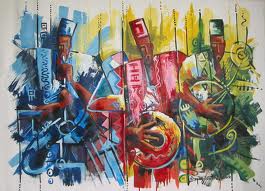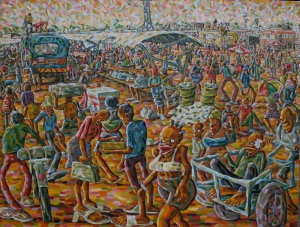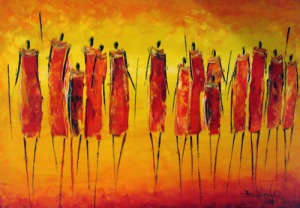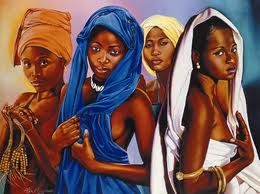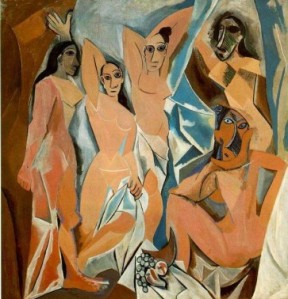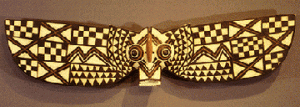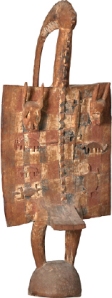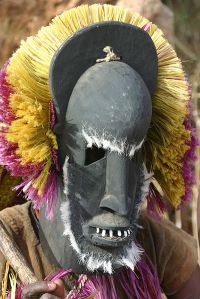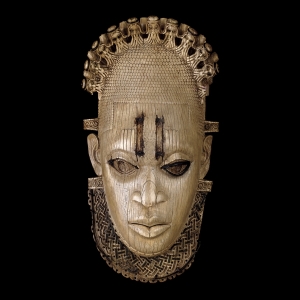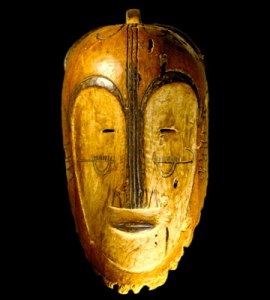Modern African Art I- I like this piece of art because of its colors and people on it. These three people look as if they are playing instruments as a whole which I like and how they are different colors.
Modern African Art II- I like this piece of art because there is a really big group of people going about their day looking very busy and how there is lots of color. I also like how the people are interacting with each other helping to improve their colony or government.
Modern African Art III- I like this piece of art because the way the people are together thus making them whole and hard to take down. It also looks like they are warriors bringing two younger men and helping him train with them. I really do like this piece and that is why I saved it for last.
